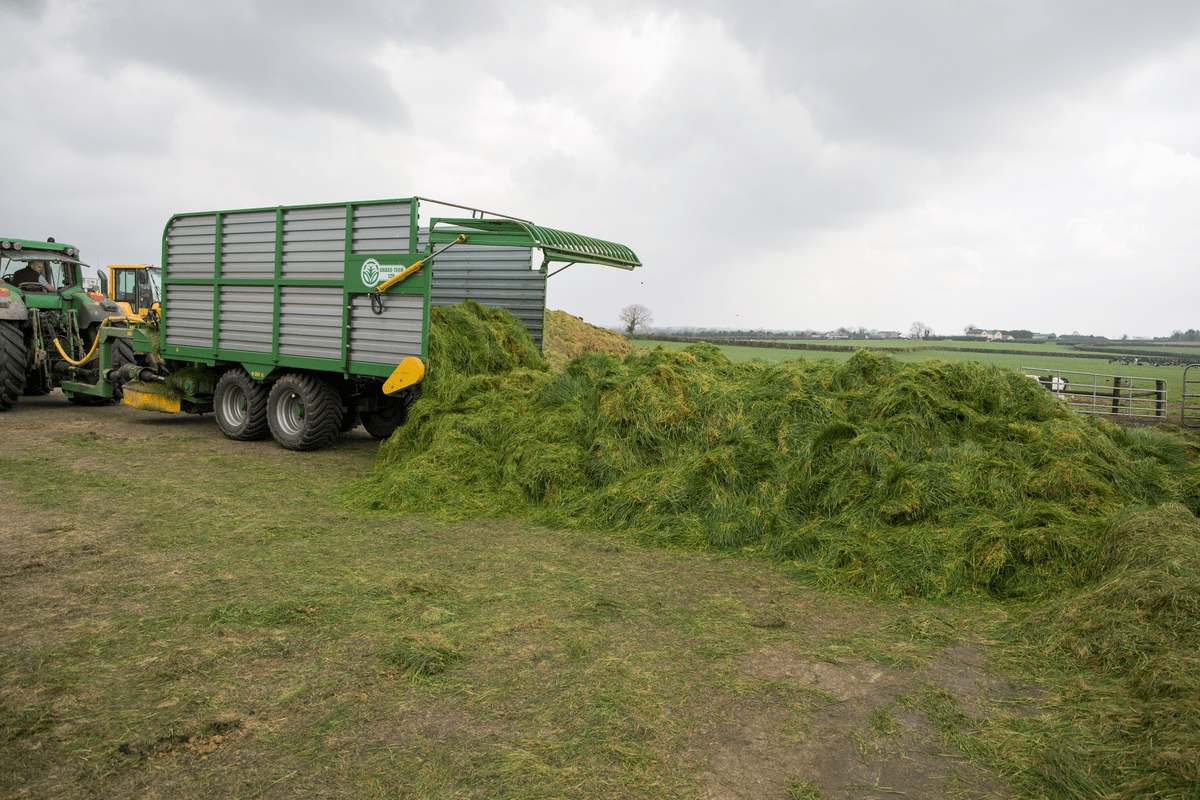Zero grazing is becoming an increasingly popular option, as farmers continue to expand their cow numbers but face a limiting factor of access to a suitable nearby grazing platform.
Zero grazing a dairy herd
New dairy entrant Noel Burke, based in Drumree, Co. Meath, was faced with exactly that challenge. He is milking 160 cows off 80 acres but has a separate 50-acre parcel of land just 2 km away. What was previously tillage ground is now grass and the 30-minute round trip with a zero grazer serves as the perfect platform for zero grazing.
Having purchased a zero-grazer in 2018, Noel admits that he is experiencing a steep learning curve on what will give the best results. But he's confident the zero grazing system he's operating is working well for his milking herd and should support his ambition to increase to 200 cows.
The 50 acres are utilised for zero grazing from mid-March through to the end of the year. This is after cows have calved and gone to grazed grass. From then, Noel brings in on average one load with the zero grazer per day, depending on growth, and the cows come in at 2.30 pm to feed off it.

They are also allowed access straight after evening milking, before being left back out to grass. An automatic gate system allows the cows back to the zero grazed grass at 4 am, prior to early morning milking. The overall diet at this time of year consists of 5 kg of zero grazed grass, 10 kg of grazed grass and 3 kg of concentrate per day.
Butterfat and protein are 4.20% and 3.48%, respectively. Looking at cow performance in Noel’s zero grazing system, the numbers stack up well. Prior to when Noel operated with a zero-grazer, cows are now producing more milk solids.
When zero grazing was incorporated in 2018, cows produced 508 kg milk solids per cow. For 2019, Noel is hoping they will achieve 525-530 kg.
This is closely associated with the fact that what cows would normally consume in three hours is now being consumed in one hour and are, therefore, spending more time turning this grass into milk. They also find the zero grazed grass far more palatable.
Management techniques
There are a number of key management techniques and practises required by Noel to make the system work for him and this comes down to a continuous reseeding programme, good fertiliser management and utilising separate blocks of grass at different times.
Reseeding of the zero grazing platform is a major contributing factor to this system working well. Quality is a key trait when selecting a grass mixture and Noel reseeds with a carefully selected zero grazing mix containing Germinal varieties.
The high-yielding, high-quality mix contains AberClyde, AberWolf and AberMagic, which all rank highly on the Teagasc Pasture Profit Index (PPI).
The tight heading date range of the varieties means an easier-to-manage sward, with less seed head emergence, thus avoiding the subsequent drop in nutritional value during the growing season. The inclusion of AberWolf aids traffic passing over the sward as it has the best score for ground cover on the PPI.
Monitoring key nutrients
Zero grazing is hard on potassium (K) and as this is continuously removed in the herbage, it needs to be replaced. This was one of the key learnings on the Burkes' farm. In Noel’s case, this is done through the application of 18-6-12 every time a block is cut.
It also receives slurry three to four times over the course of the year. The total grass dry matter (DM) yield from the zero grazed platform is 17 tonnes. A general assumption of phosphorus (P) and K requirements, per tonne of grass DM removed, is 4 kg/ha P and 30 kg/ha K.

When animals are grazing the grass, a large proportion of this P and K is returned by the animal in dung or urine. However, this is not the case in zero grazing or silage scenarios. So, farmers must take extra care to ensure they return the P and K that are being removed by the harvested herbage in order to avoid dropping soil indices.
The Burkes' zero grazing platform will be utilised in separate grazing blocks to keep the grass at different growth stages, as the season progresses. This will ensure there is always a supply of grass to be zero grazed.
Or, if excessive growth comes, the subsequent grass can be managed by using for bales or silage for the pit if ever it comes on too strong or is not required for zero grazing.
The big question when it comes to zero grazing is around the associated cost of operating such a system, especially if labour, fuel and machinery are to be accounted for.
While the simplest system is to work with conventionally grazing grass, zero-grazing is quite possibly the next best option when looking at a set-up similar to Noel’s. Which, he reports that he is covering any additional costs through an increase in productivity.
Ask about zero grazing
